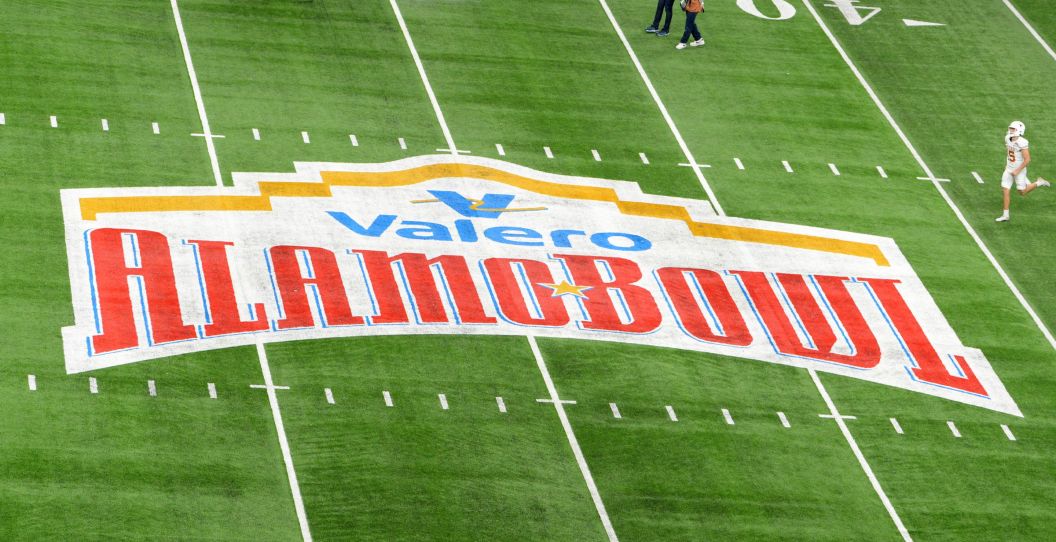Despite the serious bowl problem of players skipping out on their team one game early, the college football bowl season is the most important stretch of games for so many colleges and universities. Not only is this a chance for smaller schools to receive national attention, but the payday that comes with winning a college bowl game nearly pays for the whole party.
Sure, some of these ridiculous bowl games are basically handing out participation trophies mixed with an "atta boy!" While attendance and motivation for each games varies greatly depending on where the game takes place and who is playing, the most important figure to take away, as you'd expect, is the stone-cold cash prize at the end.
It's important to know that every school doesn't collect their winnings and scurry away to their home campus, though. Bowl game payouts are paid to each participating college football conference, which is then divided up to every school in that conference.
Yes, even though a team like the Indiana Hoosiers went just 3-9 this season, they still gets a piece of the pie for every Big Ten Conference team that wins their postseason game or makes the College Football Playoff.
Since the inception of the CFP, the money gets distributed a little bit differently than the BCS. Here is the revenue distribution for the six major bowl games — the Sugar Bowl, Fiesta Bowl, Orange Bowl, Peach Bowl, Rose Bowl and Cotton Bowl — and the rest of the sport's bowl games.
New Year's Six Bowl Game Payouts 2023

Jamie Schwaberow/Getty Images
RELATED: Ranking Every College Football Bowl Game From Worst to Best
- Each conference gets $300,000 for each school that meets the NCAA's academic performance review (APR) for participation in a postseason bowl; FBS Independents like Notre Dame also receive the same amount.
- Each of the 10 conferences receive a base payout, again pending that academic performance review. For the Power 5 conferences with contracts to send its champion to the Orange, Rose and Sugar Bowl, each conference receives around $79 million. For the other Group of Five conferences that do not have automatic bids for its champion, they divide a total of around $103 million amongst themselves. Notre Dame automatically gets $3.89 million if it meets that APR review; all other independents split about $1.89 million.
- Each conference gets $6 million for every football team it sends to a CFP playoff semifinal game. They also get an additional $4 million for participation in one of the other non-playoff New Year's Six bowl games. There is no additional revenue added for making the national championship game.
- Each conference gets an additional $2.85 million to cover travel expenses for each game. (Info via the College Football Playoff website.)
In summary: there is A LOT of money on the line for these massive football games.
In addition to the College Football Playoff revenue pool, of course, each bowl matchup game pays out to the winner. Here is how much each bowl game will pay out for the 2023 bowl season.
They include teams from every conference in college football, including the Southeastern Conference (SEC), Atlantic Coast Conference (ACC), Pac-12 Conference, Sun Belt Conference, Big Ten Conference, Big 12 Conference, Conference USA, American Athletic Conference (AAC), FBS Independents, Mid-American Conference (MAC) and Mountain West Conference (MWC).
In all there are 43 bowl games, the first of which is the Myrtle Beach Bowl between Georgia Southern and Ohio on Dec. 16 at 11 a.m. ET. Now let's get to how much each bowl game payout is.
The Rest of College Football's Bowl Game Payouts

Douglas P. DeFelice/Getty Images
And here are the full list of bowl game payouts, thanks to data from CollegeFootballPoll.com.
Alamo Bowl: $8,252,740 (Oklahoma vs. Arizona)
Arizona Bowl: $350,000 (Toledo vs. Wyoming)
Armed Forces Bowl: $1,350,000 (James Madison vs. Air Force)
Bahamas Bowl (temporarily Famous Toastery Bowl): $225,000 (Western Kentucky vs. Old Dominion)
Birmingham Bowl: $1,374,545 (Troy vs. Duke)
Boca Raton Bowl: $900,000 (USF vs. Syracuse)
Camellia Bowl: $300,000 (Arkansas State vs. Northern Illinois)
Citrus Bowl: $8,224,578 (Iowa vs. Tennessee)
Cure Bowl: $573,125 (Miami, Ohio vs. Appalachian State)
Duke's Mayo Bowl: $4,780,461 (North Carolina vs. West Virginia)
Famous Idaho Potato Bowl: $800,000 (Utah State vs. Georgia State)
Fenway Bowl: Unannounced (SMU vs. Boston College)
Frisco Bowl: $650,000 (UTSA vs. Marshall)
Gasparilla Bowl: $1,125,000 (UCF vs. Georgia Tech)
Gator Bowl: $5,350,000 (Clemson vs. Kentucky)
Guaranteed Rate Bowl: $1,625,560 (UNLV vs. Kansas)
Hawai'i Bowl: $1,200,000 (Coastal Carolina vs. San Jose State)
Holiday Bowl: $6,532,700 (Louisville vs. USC)
Independence Bowl: $2,200,000 (Texas Tech vs. California)
L.A. Bowl Hosted By Gronk: Unannounced (Boise State vs. UCLA)
Las Vegas Bowl: $2,900,000 (Northwestern vs. Utah)
68 Ventures Bowl: $1,500,000 (South Alabama vs. Eastern Michigan)
Liberty Bowl: $4,700,000 (Iowa State vs. Memphis)
Military Bowl: $2,066,990 (Virginia Tech vs. Tulane)
Music City Bowl: $5,700,000 (Auburn vs. Maryland)
Myrtle Beach Bowl: Unannounced (Georgia Southern vs. Ohio)
New Mexico Bowl: $1,050,000 (New Mexico State vs. Fresno State)
New Orleans Bowl: $825,000 (Jacksonville State vs. Louisiana)
Pinstripe Bowl: $4,400,000 (Miami vs. Rutgers)
Pop-Tarts Bowl: $6,071,760 (Kansas State vs. NC State)
Quick Lane Bowl: $2,000,000 (Bowling Green vs. Minnesota)
ReliaQuest Bowl: $6,400,000 (Wisconsin vs. LSU)
SERVPRO First Responder Bowl: $824,545 (Texas State vs. Rice)
Sun Bowl: $4,550,000 (Notre Dame vs. Oregon State)
Texas Bowl: $6,400,000 (Oklahoma State vs. Texas A&M)
Since college football moved from the BCS system to the Playoff era, money around the game has skyrocketed. While some believe the FBS should adopt the Football Championship Subdivision's (FCS) model of a 24-team tournament, it's not going to change much when the current system is working so well for everyone involved. And hey, at least we're getting a 12-team playoff next season.
The 2023 season's playoff teams — Michigan, Washington, Texas and Alabama — should bring just as much excitement and money as the following years.
